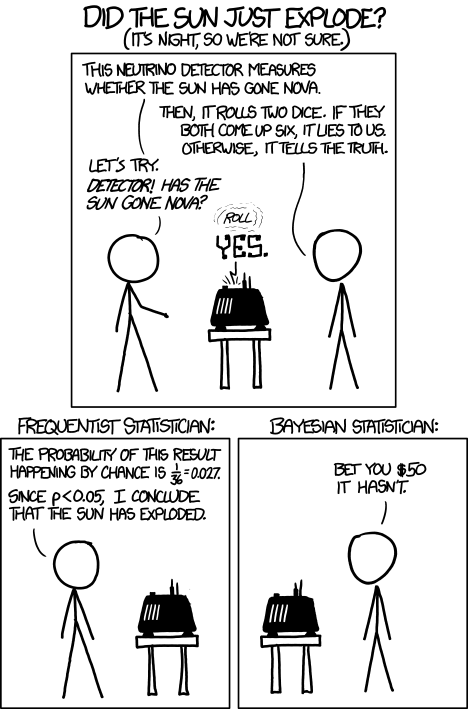Frequentism
I asked a friend to explain the difference between frequentism and bayesianism and he directed me to this very educational work of art:

So now I understand frequentism. Thank you, xkcd, for succeeding where both crossvalidated.com and Nate Silver have failed.
My ignorance of frequentism underscores the fact that most mathematicians emphasize Bayesian over frequentist principles. And yet almost every technique taught in AP Statistics is grounded in frequentism, from hypothesis tests to confidence intervals. Sorry to play both sides, but I see merit in each methodology.
Speaking of bayesian probabilities, I got the following problem from a potential student. I didn’t end up tutoring him, but I had fun working on the problem anyway.
DMD is a serious form of Muscular Dystrophy, a sex-linked recessive disease. If a woman is a carrier, her sons have a 50% chance of being affected and her daughters have a 50% chance of being carriers. 2/3 of DMD cases are inherited from Mom; 1/3 of DMD cases are due to spontaneous mutations.
There is a screening test to check whether a woman is a carrier such that:
P(T+ C+) = 0.7 - P(T- | C-) = 0.9
where T+ and T- are the events that the test is positive and negative, respectively, and C+ and C- are the events that a woman is and is not a carrier, respectively.A woman has a child with DMD and then has a screening test done to see if she is a carrier. If the test comes back positive, what is the probability that she is a carrier? What if the screening test is negative?
